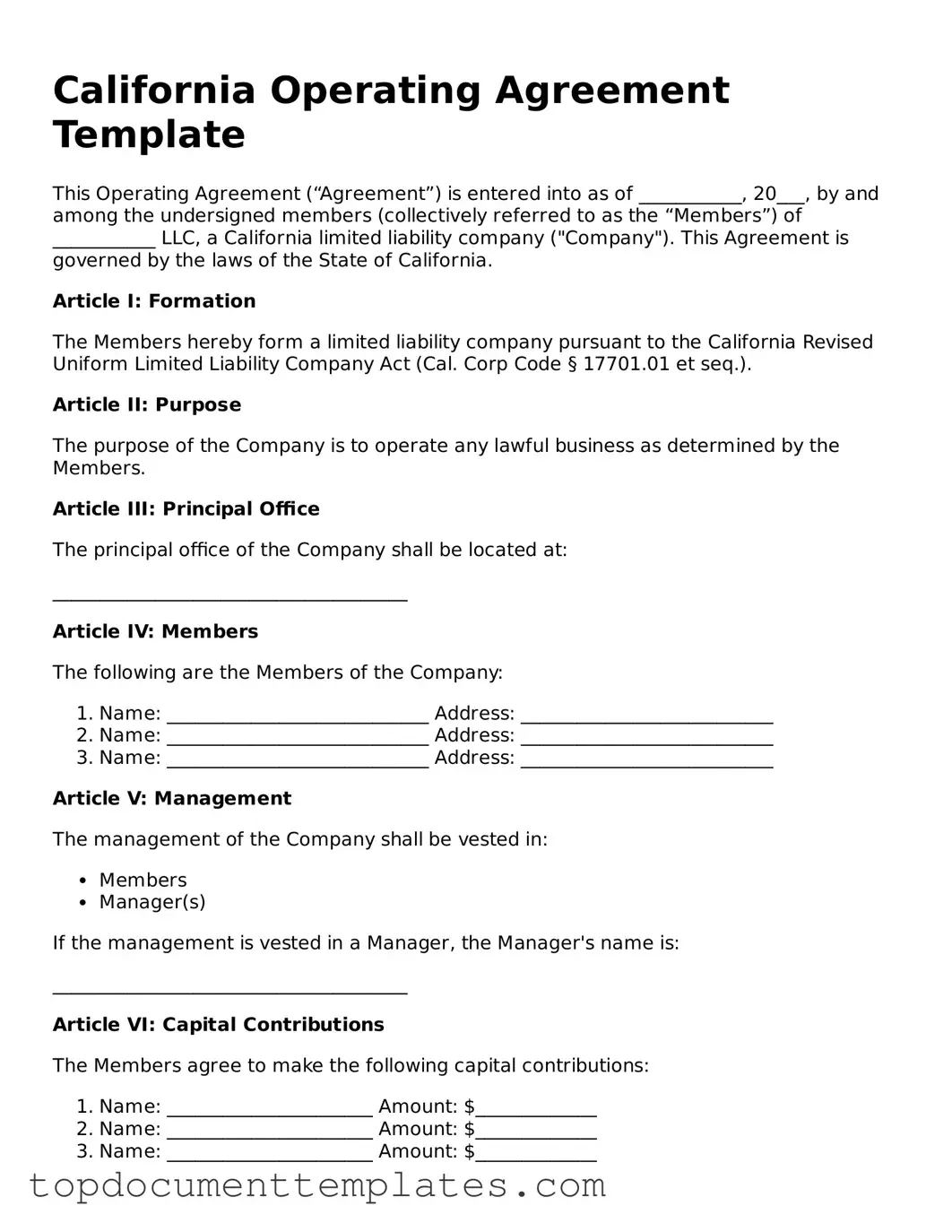Valid Operating Agreement Form for California State
The California Operating Agreement form is a crucial document that outlines the management structure and operating procedures of a limited liability company (LLC) in California. This agreement serves as a roadmap for members, detailing their rights, responsibilities, and profit-sharing arrangements. Understanding and completing this form is essential for ensuring compliance and smooth operations within your LLC.
Ready to get started? Fill out the form by clicking the button below.
Open This Form
